The sunflower state of Kansas is one of the more overlooked U.S. states when it comes to tourism. Kansas is one of the world’s leading producers of wheat and is often referred to as the ‘Breadbasket of the World’. But Kansas has more to offer than wheat and the legacy of Dorothy’s shiny red shoes.
The state is home to 10 National Parks sites, including sections of several historic trails, parks, sites and a preserve. Those interested in the Civil Rights Movement should check out the Brown v. Board of Education National Historic Park. The Fort Scott and Fort Larned National Historic Sites will grab your interest if Civil War history is your beat. Nature lovers will equally love the Tallgrass Prairie National Preserve, while history buffs and outdoorsy types have so many options with these national parks in Kansas.
Contents
- National Parks In Kansas
- National Historical Parks, Trails and Sites
- 1- Brown v. Board of Education National Historical Park
- 2- California National Historic Trial
- 3- Lewis & Clark National Historic Trail
- 4- Oregon National Historic Trail
- 5- Pony Express National Historic Trail
- 6- Santa Fe National Historic Trail
- 7- Fort Larned National Historic Site
- 8- Fort Scott National Historic Site
- 9- Nicodemus National Historic Site
- National Preserve
- National Historical Parks, Trails and Sites
National Parks In Kansas
National Historical Parks, Trails and Sites
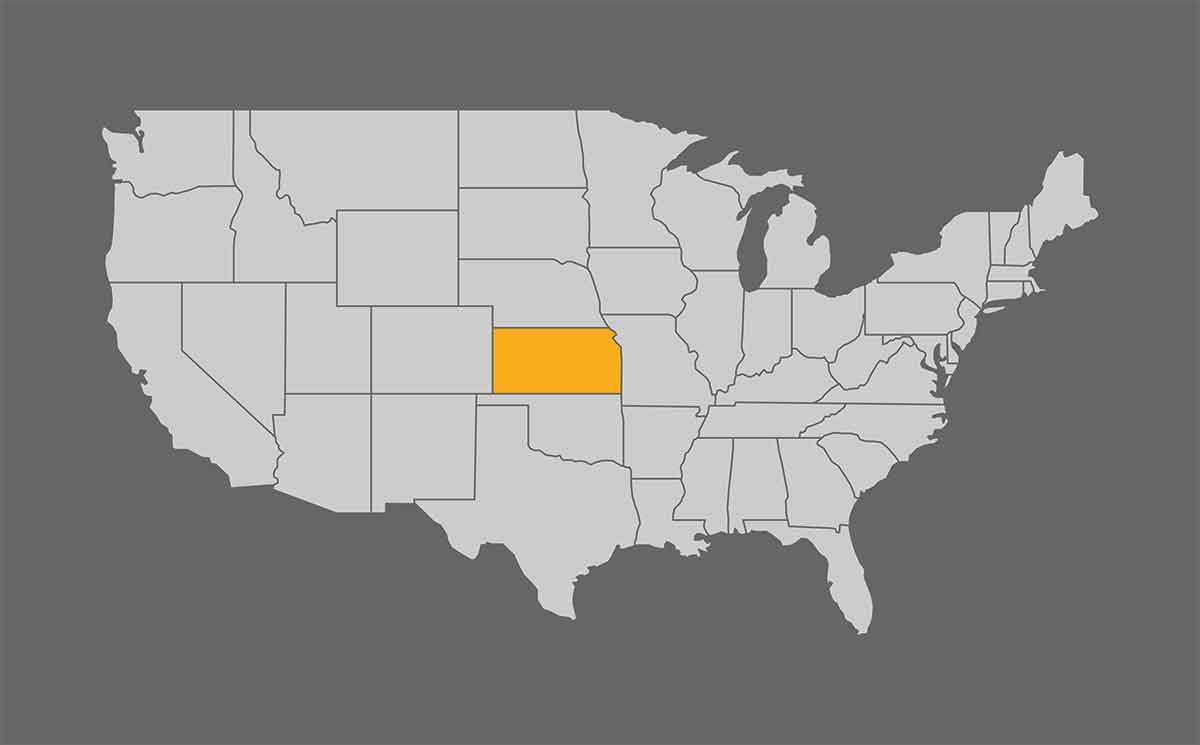
1- Brown v. Board of Education National Historical Park
If you know anything about the Civil Rights Movement in America, then you’ve probably heard of Brown v. Board of Education.
This landmark Supreme Court decision was announced on 17 May 1954.
The ruling’s most prominent statement was that “separate educational facilities are inherently unequal”.
This case began in Topeka, Kansas when Oliver Brown’s daughter was refused entry to the local school because she was Black.
She, therefore, had to ride a segregated bus to a school much further away.
The Browns and several other families filed a class-action lawsuit that this behaviour was unconstitutional.
One of Topeka’s segregated elementary schools was purchased by the National Park Service and, in 2004, was turned into a National Historic Park.
Within the old school, you can learn about the Brown v. Board of Education ruling and the Civil Rights Movement.
Inside, there are a ton of exhibits, activities, and films that document this era of American history.
Learning about this part of America’s history is critically important to understand this turn of history, so if you are in Kansas, check out this national historical park.
Brown v. Board of Education is at 1515 SE Monroe Street, Topeka.
2- California National Historic Trial
Kansas has five national historic trails to explore. The California National Historic Trail follows the footsteps of 250,000 emigrants.
This trail is 5,000 miles (8046 km) long and stretches across 10 states, from California to Kansas and Nebraska.
The emigrants that travelled this unfathomable distance wanted to travel to California to the gold fields and rich farmlands.
So between 1840 and 1850, these migrants began their long journey. This mass migration was the largest of its kind in America.
On the Kansas section of the trail, you can visit the Lower Crossing at the Blue Rapids and the Marshall County Visitors Center in Marysville.
Whether you are hiking part of the trail or simply want to stop off at some destinations, this is a beautiful way to explore Kansas.
3- Lewis & Clark National Historic Trail
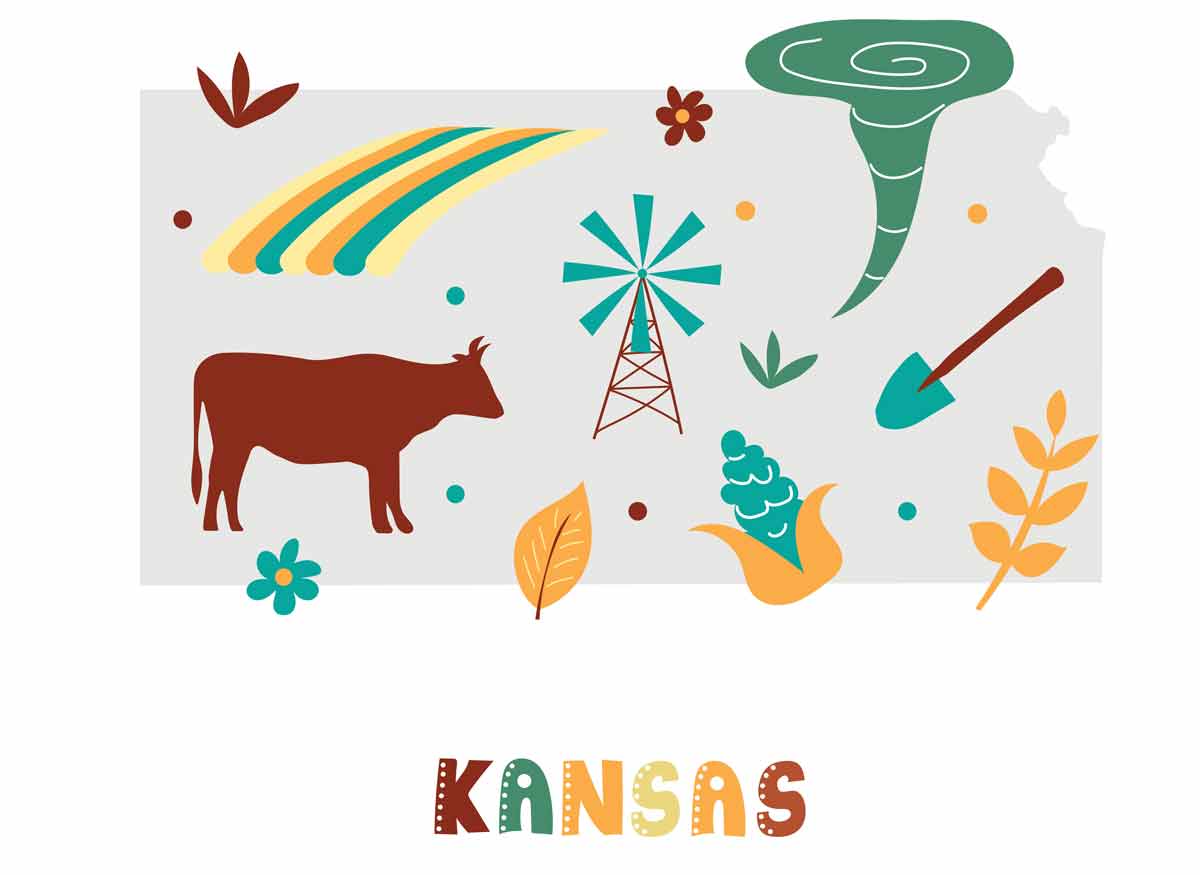
This national historic trail commemorates the 1804 to 1806 Lewis & Clark Expedition.
The 4,900-mile (7885 km) trail connects 16 states from east to west, including Pennsylvania, Ohio, West Virginia, Kentucky, Indiana, Illinois, Missouri, Kansas, Nebraska, Iowa, South and North Dakota, Montana, Idaho, Washington, and finally, Oregon.
So, what was the Lewis & Clark Expedition?
This voyage was also known as the Corps of Discovery Expedition and aimed to cross the western part of America.
Under the command of Meriwether Lewis and Lieutenant William Clark, civilian volunteers and members of the U.S. Army took on this monumental route.
The point of the exhibition was to map the new territory acquired after the Louisiana Purchase in 1803.
Though this is not specifically a hiking trail, there are opportunities to go boating, horse-riding and hiking along sections of the trail.
4- Oregon National Historic Trail
Another epically long trail that passes through Kansas is the Oregon National Historic Trail, stretching over 2,000 miles (3218 km) across six states.
Oregon lured people with its lush farmlands and the idea of a new beginning. And the ruts and traces of those who travelled these epic distances can still be seen in many states.
Kansas’ section of the trail cuts across the northeast part of the state.
Some places you can visit along Kansas’ part of the trail include St. Mary’s Mission, the Indian Pay Station Historic Site, Scott Spring and Alcove Spring.
Kansas became the gathering point for wagon trains along the trail.
Popular stopping places in Kansas were the Potawatomi Baptist Mission at Topeka, the Catholic mission at St. Mary’s, and Scott Spring at Westmoreland.
However, one of the most popular stopping points in the state along this epic trail was the Alcove Spring.
Many who went across the trail described Kansas as beautiful because of the fertility of the land.
However, the people crossing through Kansas at the time were not residents of the state because no settlement was allowed. And they were shocked to see that Kansas was not the barren “Great American Desert” that so many had described it as.
5- Pony Express National Historic Trail
Have you ever wondered how the postal service worked before the development of transportation?
For 18 months between the 3 April 1860 and the 26 October 1861, the Pony Express delivered mail using a relay of horse-mounted riders.
Although it was just in operation for 18 months, it dramatically reduced the time it took to receive mail.
Messages could be sent from the east to west coast in just 10 days.
The Pony Express lasted a short time because of the telegraph’s invention.
In Kansas, check out the Marshville Pony Express Barn, a museum dedicated to the mail service.
Learn about the operation and running of the Pony Express and visit the Hollenberg Pony Express Station, which was formerly one of the stations.
6- Santa Fe National Historic Trail
Chances are you’ve heard of Santa Fe National Historic Trail, the highway that connected Missouri and Santa Fe in Mexico.
William Becknell was responsible for the formation of this impressively long route.
Goods from Missouri were traded in Santa Fe, with riders on horseback making the long journey possible.
The Santa Fe trail has two routes, the Mountain Route (with more dependable water sources) and the Cimarron Route (the shorter and faster route with hidden water sources).
There are several places to stop off in Kansas along the Santa Fe National Historic Trail.
Stop off at the Coronado Quivira Museum if you are in or nearby Lyons.
This museum explores the history of the Quivira and other Native American people who called the area home.
The Rice County Historical Society began collecting artifacts for this museum in 1927.
On display are numerous tools, clothing and textile pieces, photographs and books that were used and made by local Native Americans.
7- Fort Larned National Historic Site
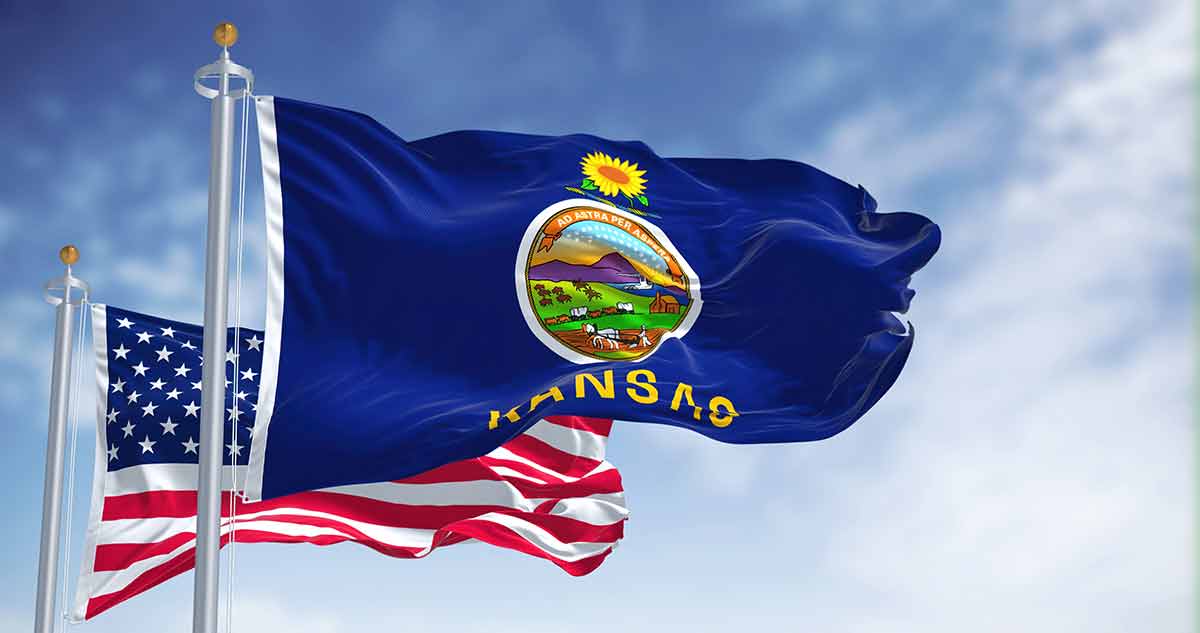
Fort Larned was built to protect those travelling along the Santa Fe Trail from Native Americans who may try and attack those riding along the trail.
Because of the conflicts between minority native people and their oppressors, military outposts were placed along the trade route.
Fort Larned was named after the U.S. Army paymaster, Benjamin R. Larned.
Visit this fort today, and you’ll find a variety of buildings, including a barracks, a hospital, commanding officers and officers’ quarters, a quartermaster storehouse, an old and new commissary, and shops.
Explore these fascinating buildings and imagine what it would have been like during the 19th century.
Fort Larned National Historic Site is at 1767 KS-156, Larned.
8- Fort Scott National Historic Site
Another national historic site is Fort Scott, a military fort built in 1842 and used for 10 years to protect the Permanent Indian Frontier.
Soldiers at the fort were tasked with keeping the peace between American Indian tribes and white settlers.
They were also responsible for patrolling trails and played a significant role in the Mexican-American War.
This once peacekeeping fort became heavily involved in the Civil War until the state boundaries between Kansas and Nebraska were established in the Kansas-Nebraska Act of 1854.
Kansas became a bloody battleground during the conflict when deciding whether Kansan and Nebraskan land would become free or pro-slavery.
The new state became known as “Bleeding Kansas” because of the murders of five pro-slavery advocates at Pottawatomie Creek.
Today you can learn about the Civil War and the role Kansas played.
Start at the visitor centre (formerly the fort’s hospital) where you can take a self-guided or phone tour.
There are 20 historic structures to look around at Fort Scott.
Fort Scott is at 199 Old Fort Boulevard, Fort Scott.
9- Nicodemus National Historic Site
Head 110 miles (177 km) northwest of Salina, Kansas, and you will find the Nicodemus National Historic Site.
Nicodemus was a famous slave who bought his freedom.
By 1877 African Americans had founded the town of Nicodemus in the northwest part of the state.
This town is the only African American town west of the Mississippi River.
It was settled on by former slaves and even today, there are descendants of the original people who formed the town still living there.
Nicodemus was made a national historic site in 1996 to celebrate local heritage.
At the town, there are five buildings to explore – the township hall, the Old First Baptist Church, the African Methodist Episcopal, the schoolhouse, and the St Francis Hotel.
The former township hall is now the site of the visitor’s centre, where you can learn more about the local history and the plight of the African American settlers.
At the time, Nicodemus represented the courage of the African American people who went to Kansas to seek better opportunities and a fresh start.
The Nicodemus National Historic Site is at 304 Washington Avenue, Bogue.
National Preserve
10- Tallgrass Prairie National Preserve
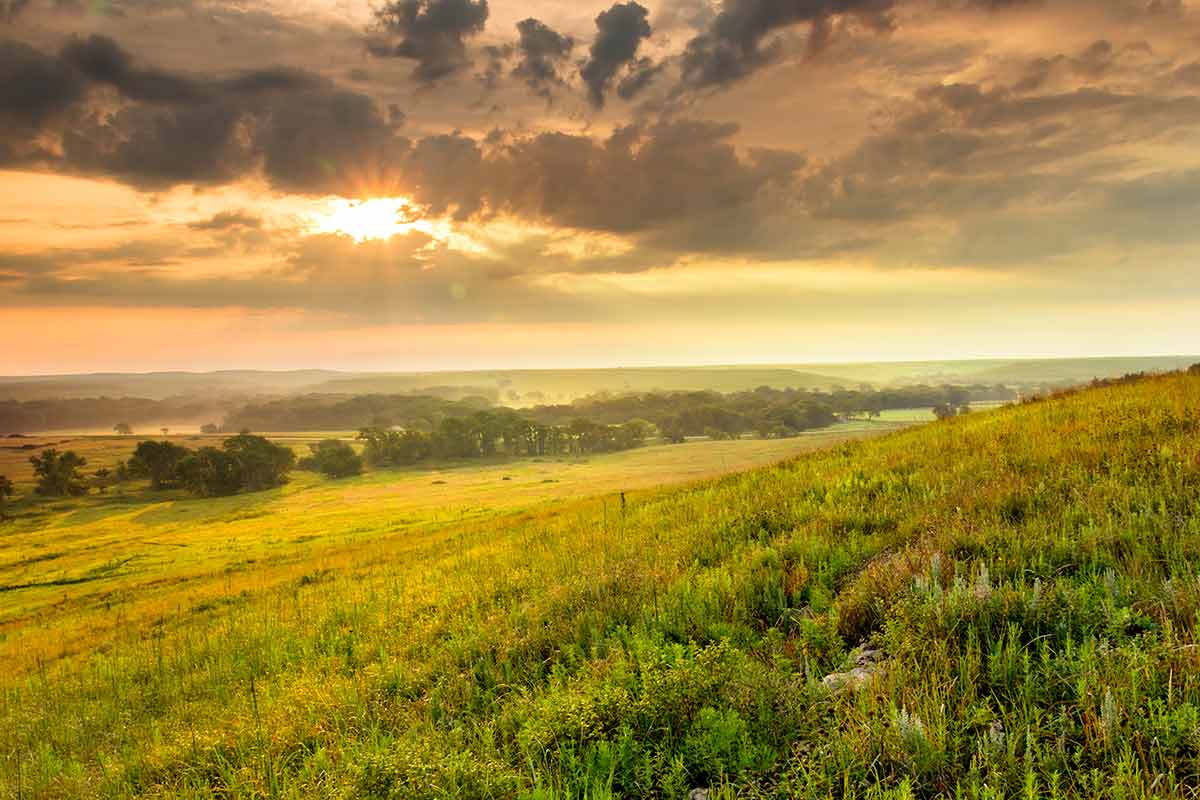
The tallgrass prairie used to cover a whopping 170 million acres (69 million ha) across North America.
It was the largest continual ecosystem on the continent and a vast array of flora and fauna made the tallgrass prairies their home.
But alas, farmers discovered that the land was ideal for crop production and the once-vast area of grasslands is now concentrated in the Flint Hill region of Kansas.
The Tallgrass Prairie National Preserve aims to protect a small portion of the remaining grasslands.
So count yourself lucky to visit this national preserve as it’s one of the rarest ecosystems in the world.
This preserve protects 10,894 acres (4408 ha) of the tallgrass prairie ecosystem.
There are three nature trails to explore, which are dog friendly. You can also take a tour of Spring Hill Farm and Stock Ranch.
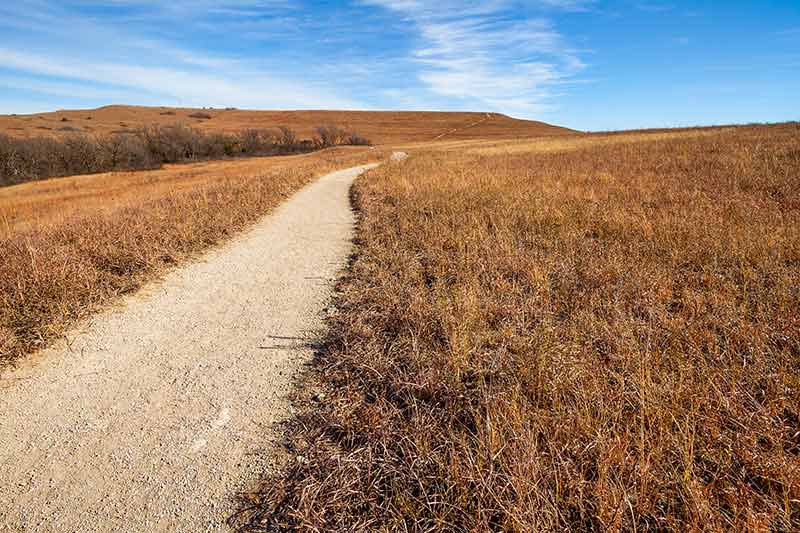
A visit to the Tallgrass Visitor Center is a must-do activity to learn about the geology, culture, history and ecology of the Tallgrass Prairie.
The Tallgrass Prairie National Preserve visitor centre is at KS-177 Scenic, Cottonwood Falls.
These National Parks and national park sites provide visitors to the state with a fascinating insight into the history and geography of Kansas. Kansas may be pictured as barren and desert-like by many, but these national parks showcase what the state is about.
If you have time for only one of these national park sites, make sure it’s the Tallgrass Prairie National Preserve. This national preserve is stunningly beautiful and reflects a dying part of the continent’s ecosystem. With humans and climate change impacting nature, it’s a good idea to see one of the last remaining ecosystems of its kind before it depletes even further.
If you love exploring national parks, you might like to read:
- Wyoming National Parks Guide
- Nevada National Parks Guide
- Michigan National Parks Guide
- 5 Maine National Parks
- New Hampshire National Parks Guide
- 25 National Parks in Canada
- 17 National Parks in Argentina
- Tasmania National Parks
- 20 National Parks in Mexico
- 18 New Mexico National Parks
- 18 National Parks in Massachusetts
- 17 Colorado National Parks
- 4 Indiana National Parks
- 5 Nebraska National Parks
- 30 Virginia National Parks
- 9 New Jersey National Parks
- 8 National Parks in Arkansas
- 8 Alaska National Parks
- 13 Tennessee National Parks
- 6 National Parks in Louisiana
- 5 Illinois National Parks
- 7 National Parks in Oklahoma
- 7 National Parks in South Dakota
- 12 Alabama National Parks
- 5 North Dakota National Parks
- 8 National Parks in West Virginia
- 20 National Parks in Arizona
- 11 National Parks In Florida
- 8 Hawaii National Parks
- 6 National Parks In Idaho
- Texas National Parks Guide
- 9 California National Parks
- 11 National Parks In Georgia
- 7 National Parks In Missouri
- 5 National Parks in Minnesota
- 7 National Parks In Kentucky
- 8 National Parks In Montana
- 15 National Parks In Washington State
- 8 South Carolina National Parks
- 12 North Carolina National Parks
- 4 Wisconsin National Parks
- 20 National Parks In India
- 11 Oregon National Parks
- 5 Connecticut National Parks
- 27 National Parks In New York State
- 4 Iowa National Parks
- Yosemite National Park
- Zion National Park
- 21 National Parks in Pennsylvania
- 9 National Parks in Mississippi
- 5 National Parks in Rhode Island
- 9 National Parks in Taiwan
- 20 East Coast National Parks
- Guide To Winter in Yellowstone National Park
Plan Your Trip

Rent A Car – Find the best car rental rates at Discover Cars. They compare car hire companies to provide you with the best deal right now.

Find A Hotel – If you’re curious about this article and are looking for somewhere to stay, take a look at these amazing hotels.





